Washing a judo kimono in the washing machine
 Clothes intended for combat sports must be washed regularly. Usually, kimonos can be machine washed, but it is still better to check the care instructions on the product label.
Clothes intended for combat sports must be washed regularly. Usually, kimonos can be machine washed, but it is still better to check the care instructions on the product label.
The traditional uniform for Japanese martial arts lessons is made of 100% cotton, so even with careful washing, the material can naturally shrink by 3-5%. How to properly wash a judo kimono? What recommendations should you follow when cleaning things?
How often should I use the machine?
The judo uniform should be washed as needed. This will depend on the frequency, intensity and duration of training, the individual characteristics of the person, and some external factors. It is not necessary to throw your kimono into the washing machine after every wear. If the clothes are not seriously dirty, just rinse the item on your hands and dry thoroughly.
It is better to throw a kimono into the machine no more than once every one or two weeks.
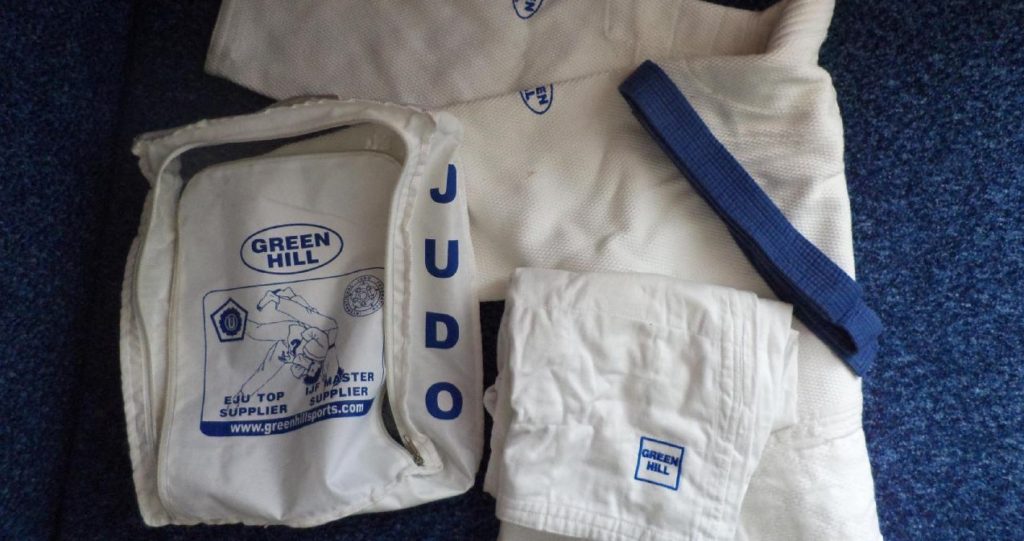
If the coach does not prohibit it, you can wear a thin cotton T-shirt under your uniform. It will absorb some of the sweat, making the kimono less dirty.
Getting rid of difficult stains and stench
Before you throw your judo uniform into the washing machine, you need to inspect the item. A high-quality kimono retains its snow-white appearance for a long time, while inexpensive suits can take on a gray or yellowish tint. In this case, you will have to additionally bleach the set.
To restore the whiteness of cotton fabric, you can use oxygen bleaches or other products that increase the alkalinity of regular laundry detergent. With the help of these compositions, fats are effectively destroyed, which are the cause of the appearance of a yellow tint on white material.
If you bleach a judo suit according to all the rules, the properties of the fabric will not change. It is important to stop using chlorine-containing products. Chlorine destroys fibers, making fabric more fragile and worn out.
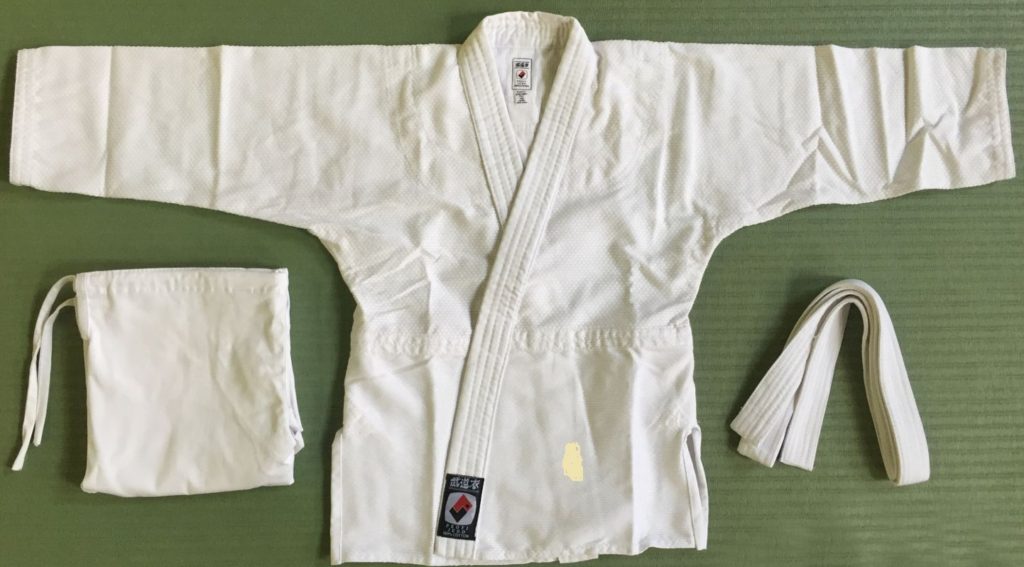
It is no secret that kimono very quickly absorbs unpleasant “odors”. To cope with the smell of sweat, the suit should be dried immediately after training. If you need to refresh the mold, rinse it in clean, warm water with the addition of two tablespoons of table vinegar. The foul amber will disappear.
The most difficult areas to clean are sleeve cuffs, kimono collars and armpit areas. It is better to pre-wash problem areas using laundry soap, washing gel or regular powder. It is allowed to use gentle stain removers for cotton fabrics. Only after this can the martial arts uniform be thrown into the washing machine.
Let's use an automatic machine
Typically, the manufacturer does not prohibit automatic washing of kimonos. When choosing this cleaning method, it is important to follow some recommendations. The algorithm of actions will be as follows:
- prepare the suit for loading into the machine. Wash stubborn stains, turn the kimono inside out, straighten and smooth the fabric. The colored belt must be washed separately - it may fade;
- Carefully roll up the kit and load it into the washing machine. It is better to first put the form in a special mesh bag for washing;
- Pour washing powder or liquid detergent into the dispenser. If necessary, fill the special compartment with conditioner-rinse aid;
- Choose a mode that meets the rules for caring for cotton items. Make sure that the water temperature does not exceed 30°C. Sometimes you can increase the heating to 90°C, so the product will undergo antibacterial treatment, but at the same time the percentage of cotton shrinkage and fabric wear will increase;
- Set the spin speed to low, from 400 to 800 rpm. More intensive processing will lead to the formation of wrinkles on clothing, which will then be difficult to smooth out;
- activate the cycle.
It is important to choose a long mode so that the kimono “spins” in the machine for at least an hour and a half.
During this time, all dirt will be washed out of the fabric fibers. When running a short program, such as “Quick Wash”, only surface dirt will be removed and the desired result will not be achieved.
Having taken the kimono out of the drum, hang it on hangers and carefully straighten out all the folds. You need to dry the suit on the balcony, avoiding exposure of the fabric to ultraviolet radiation, or in a well-ventilated area. Hanging a white uniform on a radiator, electric dryer or near heaters is prohibited.
If desired, you can starch a cotton kimono. You can make a starch paste with your own hands and add the product to the water when rinsing. This way the fabric will literally “squeak” from cleanliness and pleasantly cool the skin.
A smooth kimono can be ironed through a layer of gauze. A woven suit can simply be carefully straightened and straightened by hand. If you follow all the rules for washing a judo kit, there will be no creases left on the material.
If after drying the kimono has a lot of deep folds, it is better to wet the suit again and dry it according to all the rules.
What about the belt?
Young judokas begin their journey with a white belt. In this case, no special questions arise - the form is simply erased along with the strap. Experienced athletes who have earned the right to wear colored obi will have to clean the belt separately from the suit. By the way, there are martial arts schools that prohibit washing the kimono belt. But that's another question.
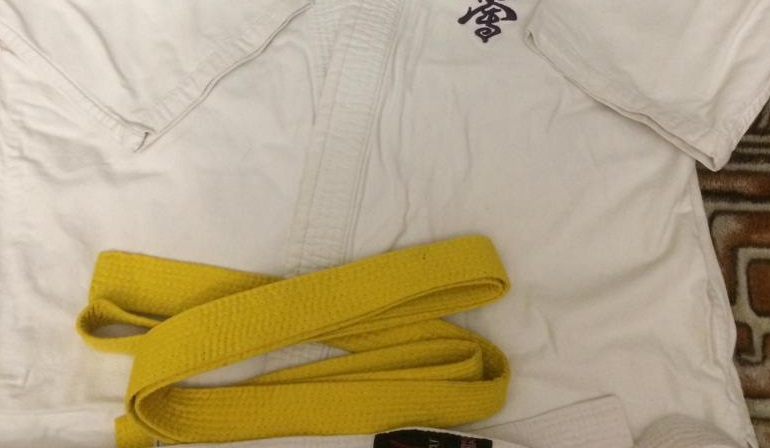
Washing the belt by hand is quite simple. You should fill a basin with warm water, add a product for colored items, and soak the belt for 20-30 minutes. Next, all that remains is to wash off the dirt using kneading movements and rinse the product.
If there are difficult stains on the belt, it is better to wash them before the main wash. To do this, you can use special stain removers for colored fabrics (without chlorine) or oxygen bleaches.
Recommendations from professionals
The basic rules for caring for a kimono are written on the product label. The manufacturer talks about the preferred cleaning method, temperature conditions, and ironing capabilities. The fabric composition is also written on the tag. Suits made from pure cotton require more careful handling; if synthetic fibers are added to the material, there will be fewer restrictions.
It is worth understanding that the fabric from which kimonos are sewn “sits” unevenly, it all depends on the method of weaving the fibers and the arrangement of the threads. Typically, judo jackets shrink greatly in width, while their length remains virtually unchanged.
When washing a kimono, it is important to adhere to the following recommendations:
- Do not overuse high temperature programs.Hot water slowly destroys cotton fibers, causing the fabric to wear out faster;
- if you cannot remove stains yourself using available means, take the item to the dry cleaner;
- To improve the washing effect, add conditioner-rinse aid with antistatic effect to the powder receptacle. This way the material will be softer and softer;
- In winter, it is better to ventilate your judo uniform in the frosty air after each workout;
- Please note that a high-quality kimono takes a long time to dry. Therefore, if your Japanese martial arts classes take place daily, purchase a second set for each shift. Otherwise, you will have to resort to prohibited accelerated drying, as a result of which the form will quickly lose its appearance.
If you wear a tank top or T-shirt under your kimono, it is best to wash it in hot water after each workout. High temperature treatment will help eliminate microorganisms that have settled in the fibers of the fabric. Also, if you notice that the judo uniform does not shrink, wash the suit once a month at a temperature of 65-90°C. This measure will help destroy bacteria that cause the foul odor.
After washing, it is important to immediately remove the sports set from the washing machine, shake it well and hang it up. If the suit sits in the drum for a long time, it will become wrinkled and may acquire a musty “aroma.”
And one more thing - when getting ready for training, it is important to carefully put the kimono in your bag. A properly laid suit will not wrinkle, which means it will retain its fresh appearance longer.
Interesting:
Reader comments
- Share your opinion - leave a comment
Categories
Washing machine repair


For buyers

For users

Dishwasher


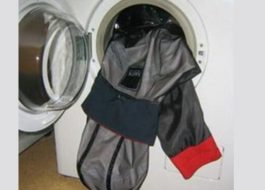

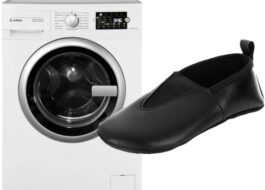
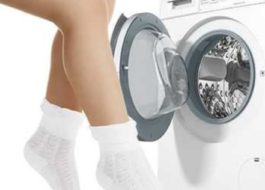











Add a comment